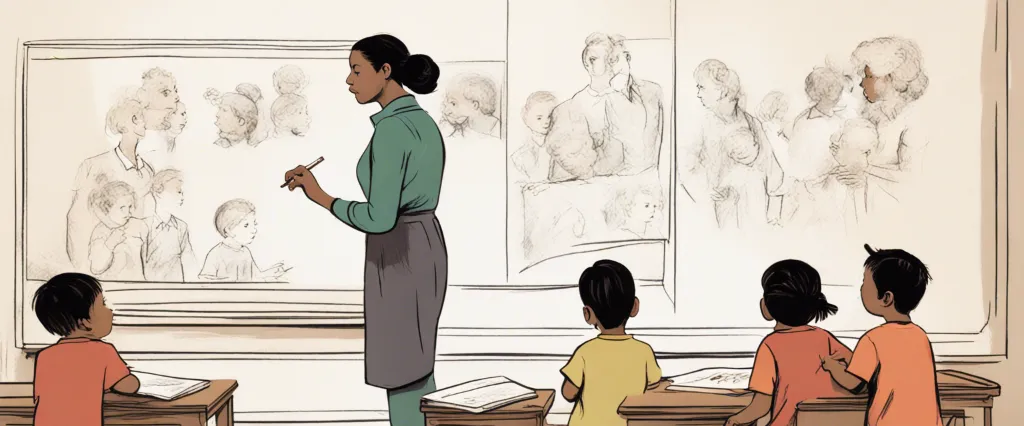——What Our Children Teach Us by Piero Ferrucci & A Guide to the Good Life by William B. Irvine

In the ever-evolving landscape of self-help literature, countless books promise to guide us towards happiness, fulfillment, and a meaningful existence. Among these, Piero Ferrucci’s What Our Children Teach Us and William B. Irvine’s “A Guide to the Good Life” stand out as compelling works that delve into the depths of human experience. Both authors explore profound themes of personal growth, self-discovery, and the pursuit of happiness, presenting distinct perspectives on how we can navigate the complexities of life. As we embark on this comparative study, we will unravel the essence of these two books, examining their unique approaches to unlocking the secrets of a contented life. By analyzing Ferrucci’s compassionate exploration of the wisdom children offer us and Irvine’s practical philosophy of Stoicism, we aim to uncover valuable insights that can inspire us in our own pursuit of happiness. Let us now embark on this intellectual journey, delving into the pages of these profound works that hold the potential to ignite within us a deeper understanding of ourselves and the world around us.
Brief Summary of Two Books
What Our Children Teach Us by Piero Ferrucci
What Our Children Teach Us” by Piero Ferrucci is a thoughtful and insightful book that explores the profound lessons parents can learn from their children. Ferrucci, a psychotherapist and educator, argues that children possess innate qualities and wisdom that can inspire adults to live more fulfilling lives.
The book examines various aspects of child development and how they reflect important values and principles. Ferrucci explores how children possess qualities such as curiosity, creativity, and spontaneity that adults often lose touch with as they grow older. He encourages parents to pay attention to their children and create an atmosphere of learning and growth.
Ferrucci also delves into the importance of love and nurturing in a child’s life. He highlights the powerful impact that a secure and loving environment can have on a child’s development and how parents can cultivate this essential bond. The book emphasizes the importance of spending quality time with children, actively listening to them, and fostering a strong emotional connection.
Furthermore, Ferrucci discusses the role of discipline and boundaries in raising children. He identifies the importance of setting reasonable limits and teaches parents how to navigate the balance between guiding children and allowing them to explore and make their own choices.
Another significant theme of the book is the idea that children have much to teach us about living in the present moment. Ferrucci encourages parents to embrace the childlike qualities of wonder, curiosity, and awe and to be fully present with their children. He suggests that through observing their children’s simplicity and joy, parents can rediscover the beauty and innocence of life.
Overall, “What Our Children Teach Us” is a heartfelt and insightful exploration of the lessons parents can learn from their children. Ferrucci inspires readers to approach parenting with mindfulness, compassion, and openness, ultimately encouraging personal growth and fulfillment for both parents and children.
A Guide to the Good Life by William B. Irvine
A Guide to the Good Life: The Ancient Art of Stoic Joy, written by William B. Irvine, is a practical and accessible introduction to the philosophy of Stoicism and how it can be applied to daily life.
The book begins by explaining the historical origins of Stoicism, tracing its roots to ancient Greece and Rome. Stoicism is a philosophy that teaches individuals to focus on their inner virtues and cultivate a mindset that is resilient to the uncertainties and challenges of life. Irvine illustrates how Stoicism can provide a practical framework for achieving a life of tranquility and fulfillment.
Throughout the book, Irvine introduces key Stoic concepts and techniques that enable readers to live a more content and meaningful existence. He explores the idea of living in harmony with nature, emphasizing that individuals should align their desires and expectations with the natural order of things. Irvine also discusses the importance of developing a sense of detachment, learning to let go of things that are beyond our control, and accepting the inevitability of change.
One particular aspect of Stoicism that Irvine highlights is the practice of negative visualization, where individuals actively contemplate worst-case scenarios to cultivate gratitude for what they already have. This exercise helps to cultivate resilience and the ability to appreciate the present moment.
The book explores the various Stoic practices, such as the intentional embrace of discomfort and the disciplined control of desires. Irvine also provides guidance on how to apply Stoicism to the modern world, addressing challenges such as materialism, social expectations, and the pursuit of wealth and fame.
In addition to practical advice, A Guide to the Good Life delves into the lives of the ancient Stoics, sharing anecdotes and wisdom from figures such as Epictetus, Seneca, and Marcus Aurelius. These historical examples illustrate how Stoicism can be applied to everyday challenges and further enhance one’s philosophical journey.
Overall, A Guide to the Good Life offers readers a practical guide to applying the principles of Stoicism in a modern context. Through its relatable examples, clear explanations, and actionable advice, Irvine presents Stoicism as a philosophy that can guide individuals towards a life of greater peace and fulfillment.
Comparison between Two Books

Similarities in Positive Thinking
Both “What Our Children Teach Us” by Piero Ferrucci and “A Guide to the Good Life” by William B. Irvine emphasize the importance of positive thinking and its impact on our lives.
1. Power of perspective: Both authors emphasize the power of our perspective in shaping our experiences and outcomes in life. They argue that by adopting a positive mindset, we can transform our perceptions and approach challenging situations with optimism.
2. Cultivating gratitude: Both books advocate for the practice of gratitude as a means to promote positive thinking. Ferrucci and Irvine highlight the importance of appreciating the small joys in life and expressing gratitude for the blessings we have. They both suggest keeping gratitude journals or engaging in daily gratitude exercises to foster a positive mindset.
3. Overcoming negative thoughts: Both authors highlight the significance of overcoming negative thoughts and replacing them with positive ones. They provide various techniques and exercises to help readers identify and challenge their negative thinking patterns, such as cognitive restructuring and reframing.
4. Embracing positive emotions: Ferrucci and Irvine emphasize the importance of cultivating positive emotions and seeking out experiences that bring us joy, happiness, and contentment. They suggest that by consciously choosing positivity and focusing on the positive aspects of any situation, we can enhance our overall well-being.
5. Mindfulness and present moment: Both books advocate for mindfulness practice as a means to foster positive thinking. Ferrucci and Irvine discuss the significance of being fully present in the current moment, observing our thoughts and emotions without judgment. They argue that by practicing mindfulness, we can better control our thinking patterns and enhance our ability to think positively.
Overall, both “What Our Children Teach Us” and “A Guide to the Good Life” underline the importance of positive thinking in shaping our attitudes, perceptions, and experiences in life. They provide practical strategies and insights to help readers cultivate positivity and embrace a more optimistic outlook.
Divergences in Positive Thinking
In comparing “What Our Children Teach Us” by Piero Ferrucci and “A Guide to the Good Life” by William B. Irvine, one of the divergences lies in their perspectives on positive thinking. While both authors recognize the importance of positivity, they approach it from different angles and emphasize distinct aspects of this mindset.
Piero Ferrucci’s book “What Our Children Teach Us” explores the profound life lessons that children can impart to adults. In his work, Ferrucci emphasizes the power of optimism and positive thinking as fundamental qualities that children possess naturally. He suggests that by observing and learning from children, adults can regain a sense of wonder, joy, and resiliency that promotes positive thinking. Ferrucci stresses the importance of embracing the present moment, celebrating small victories, and finding happiness in everyday experiences.
On the other hand, “A Guide to the Good Life” by William B. Irvine is a philosophical exploration of Stoicism, an ancient Greco-Roman philosophy centered around attaining inner tranquility and living a fulfilled life. While Irvine acknowledges the value of positive thinking, he adopts a more nuanced perspective on this mindset. For Irvine, true positivity stems not from an incessant focus on positive thoughts and emotions, but rather from achieving a state of equanimity through the acceptance of both positive and negative experiences. According to Stoicism, it is essential to cultivate an attitude of indifference towards external events and focus instead on how one perceives and responds to them. Irvine encourages readers to practice negative visualization, contemplating worst-case scenarios to better appreciate what they have and foster gratitude.
Therefore, the divergence between these books is that Ferrucci’s “What Our Children Teach Us” emphasizes the power of innate positivity and celebrating the present moment, while Irvine’s “A Guide to the Good Life” promotes a Stoic philosophy that encourages acceptance of both positive and negative experiences, leading to a more balanced worldview and inner tranquility.

Conclusion
Both “What Our Children Teach Us” by Piero Ferrucci and “A Guide to the Good Life” by William B. Irvine are highly regarded books with valuable insights. The choice between them ultimately depends on your personal interests and preferences.
If you are looking for a book that explores the wisdom and life lessons we can learn from observing and engaging with children, then “What Our Children Teach Us” would be more worthy of reading. Piero Ferrucci delves into the world of children and sheds light on the valuable life lessons they can offer us through their simplicity, authenticity, and sense of wonder.
On the other hand, if you are interested in philosophy and the ancient practice of Stoicism, “A Guide to the Good Life” by William B. Irvine would be a great choice. Irvine explores the teachings of Stoicism and how they can be applied to modern life, offering practical advice on living a good and meaningful life amidst challenges and difficulties.
Both books have their own unique insights and teachings, so consider your interests and what you are hoping to gain from reading before making a decision.



